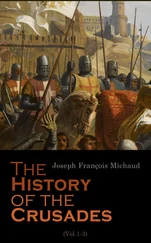All the tribes on the continent of Africa are under, to a greater or less degree, the patriarchal form of government. It is usual for writers on Africa to speak of "kingdoms" and "empires;" but these kingdoms are called so more by compliment than with any desire to convey the real meaning that we get when the empire of Germany or kingdom of Spain is spoken of. The patriarchal government is the most ancient in Africa. It is true that great kingdoms have risen in Africa; but they were the result of devastating wars rather than the creation of political genius or governmental wisdom.
"Pangola is the child or vassal of Mpende. Sandia and Mpende are the only independent chiefs from Kebrabasa to Zumbo, and belong to the tribe Manganja. The country north of the mountains, here in sight from the Zambesi, is called Senga, and its inhabitants Asenga or Basenga; but all appear to be of the same family as the rest of the Manganja and Maravi. Formerly all the Manganja were united under the government of their great chief, Undi, whose empire extended from Lake Shirwa to the River Loangwa; but after Undi's death it fell to pieces, and a large portion of it on the Zambesi was absorbed by their powerful Southern neighbors, the Bamjai. This has been the inevitable fate of every African empire from time immemorial. A chief of more than ordinary ability arises, and, subduing all his less powerful neighbors, founds a kingdom, which he governs more or less wisely till he dies. His successor, not having the talents of the conqueror, cannot retain the dominion, and some of the abler under-chiefs set up for themselves; and, in a few years, the remembrance only of the empire remains. This, which may be considered as the normal state of African society, gives rise to frequent and desolating wars, and the people long in vain for a power able to make all dwell in peace. In this light a European colony would be considered by the natives as an inestimable boon to inter-tropical Africa. Thousands of industrious natives would gladly settle around it, and engage in that peaceful pursuit of agriculture and trade of which they are so fond; and, undistracted by wars or rumors of wars, might listen to the purifying and ennobling truths of the gospel of Jesus Christ. The Manganja on the Zambesi, like their countrymen on the Shire, are fond of agriculture; and, in addition to the usual varieties of food, cultivate tobacco and cotton in quantities more than equal to their wants. To the question, 'Would they work for Europeans?' an affirmative answer may be given; if the Europeans belong to the class which can pay a reasonable price for labor, and not to that of adventurers who want employment for themselves. All were particularly well clothed from Sandia's to Pangola's; and it was noticed that all the cloth was of native manufacture, the product of their own looms. In Senga a great deal of iron is obtained from the ore, and manufactured very cleverly." 68
The above is a fair description of the internecine wars that have been carried on between the tribes in Africa, back "to a time whereof the memory of man runneth not to the contrary." In a preceding chapter we gave quite an extended account of four Negro empires. We call attention here to the villages of these people, and shall allow writers who have paid much attention to this subject to give their impressions. Speaking of a village of the Aviia tribe called Mandji, Du Chaillu says—
"It was the dirtiest village I had yet seen in Africa, and the inhabitants appeared to me of a degraded class of Negroes. The shape and arrangement of the village were quite different from any thing I had seen before. The place was in the form of a quadrangle, with an open space in the middle not more than ten yards square; and the huts, arranged in a continuous row on two sides, were not more than eight feet high from the ground to the roof. The doors were only four feet high, and of about the same width, with sticks placed across on the inside, one above the other, to bar the entrance. The place for the fire was in the middle of the principal room, on each side of which was a little dark chamber; and on the floor was an orala , or stage, to smoke meat upon. In the middle of the yard was a hole dug in the ground for the reception of offal, from which a disgusting smell arose, the wretched inhabitants being too lazy or obtuse to guard against this by covering it with earth.
"The houses were built of a framework of poles, covered with the bark of trees, and roofed with leaves. In the middle of the village stood the public shed, or palaver-house—a kind of town-hall found in almost all West-African villages. A large fire was burning in it, on the ground; and at one end of the shed stood a huge wooden idol, painted red and white, and rudely fashioned in the shape of a woman. The shed was the largest building in the village, for it was ten feet high, and measured fifteen feet by ten. It is the habit of the lazy negroes of these interior villages—at least, the men—to spend almost the whole day lying down under the palaver-shed, feeding their morbid imaginations with tales of witchcraft, and smoking their condoquais ."
But all the villages of these poor children of the desert are not so untidy as the one described above. There is a wide difference in the sanitary laws governing these villages.
"The Ishogo villages are large. Indeed, what most strikes the traveller in coming from the seacoast to this inland country, is the large size, neatness, and beauty of the villages. They generally have about one hundred and fifty or one hundred and sixty huts, arranged in streets, which are very broad and kept remarkably clean. Each house has a door of wood which is painted in fanciful designs with red, white, and black. One pattern struck me as simple and effective; it was a number of black spots margined with white, painted in regular rows on a red ground. But my readers must not run away with the idea that the doors are like those of the houses of civilized people; they are seldom more than two feet and a half high. The door of my house was just twenty-seven inches high. It is fortunate that I am a short man, otherwise it would have been hard exercise to go in and out of my lodgings. The planks of which the doors are made are cut with great labor by native axes out of trunks of trees, one trunk seldom yielding more than one good plank. My hut, an average-sized dwelling, was twenty feet long and eight feet broad. It was divided into three rooms or compartments, the middle one, into which the door opened, being a little larger than the other two. … Mokenga is a beautiful village, containing about one hundred and sixty houses; they were the largest dwellings I had yet seen on the journey. The village was surrounded by a dense grove of plantain-trees, many of which had to be supported by poles, on account of the weight of the enormous bunches of plantains they bore. Little groves of lime-trees were scattered everywhere, and the limes, like so much golden fruit, looked beautiful amidst the dark foliage that surrounded them. Tall, towering palm-trees were scattered here and there. Above and behind the village was the dark green forest. The street was the broadest I ever saw in Africa; one part of it was about one hundred yards broad, and not a blade of grass could be seen in it. The Sycobii were building their nests everywhere, and made a deafening noise, for there were thousands and thousands of these little sociable birds." 69
The construction of houses in villages in Africa is almost uniform, as far as our studies have led us. 70Or, rather, we ought to modify this statement by saying there are but two plans of construction. One is where the houses are erected on the rectilinear, the other is where they are built on the circular plan. In the more warlike tribes the latter plan prevails. The hillsides and elevated places near the timber are sought as desirable locations for villages. The plan of architecture is simple. The diameter is first considered, and generally varies from ten to fifteen feet. A circle is drawn in the ground, and then long flexible sticks are driven into the earth. The builder, standing inside of the circle, binds the sticks together at the top; where they are secured together by the use of the "monkey-rope," a thick vine that stretches itself in great profusion from tree to tree in that country. Now, the reader can imagine a large umbrella with the handle broken off even with the ribs when closed up, and without any cloth—nothing but the ribs left. Now open it, and place it on the ground before you, and you have a fair idea of the hut up to the present time. A reed thatching is laid over the frame, and secured firmly by parallel lashings about fifteen inches apart. The door is made last by cutting a hole in the side of the hut facing toward the centre of the contemplated circle of huts. 71The door is about eighteen inches in height, and just wide enough to admit the body of the owner. The sharp points, after the cutting, are guarded by plaited twigs. The door is made of quite a number of stout sticks driven into the ground at equal distances apart, through which, in and out, are woven pliant sticks. When this is accomplished, the maker cuts off the irregular ends to make it fit the door, and removes it to its place. Screens are often used inside to keep out the wind: they are made so as to be placed in whatever position the wind is blowing. Some of these houses are built with great care, and those with domed roofs are elaborately decorated inside with beads of various sizes and colors.
Читать дальше












